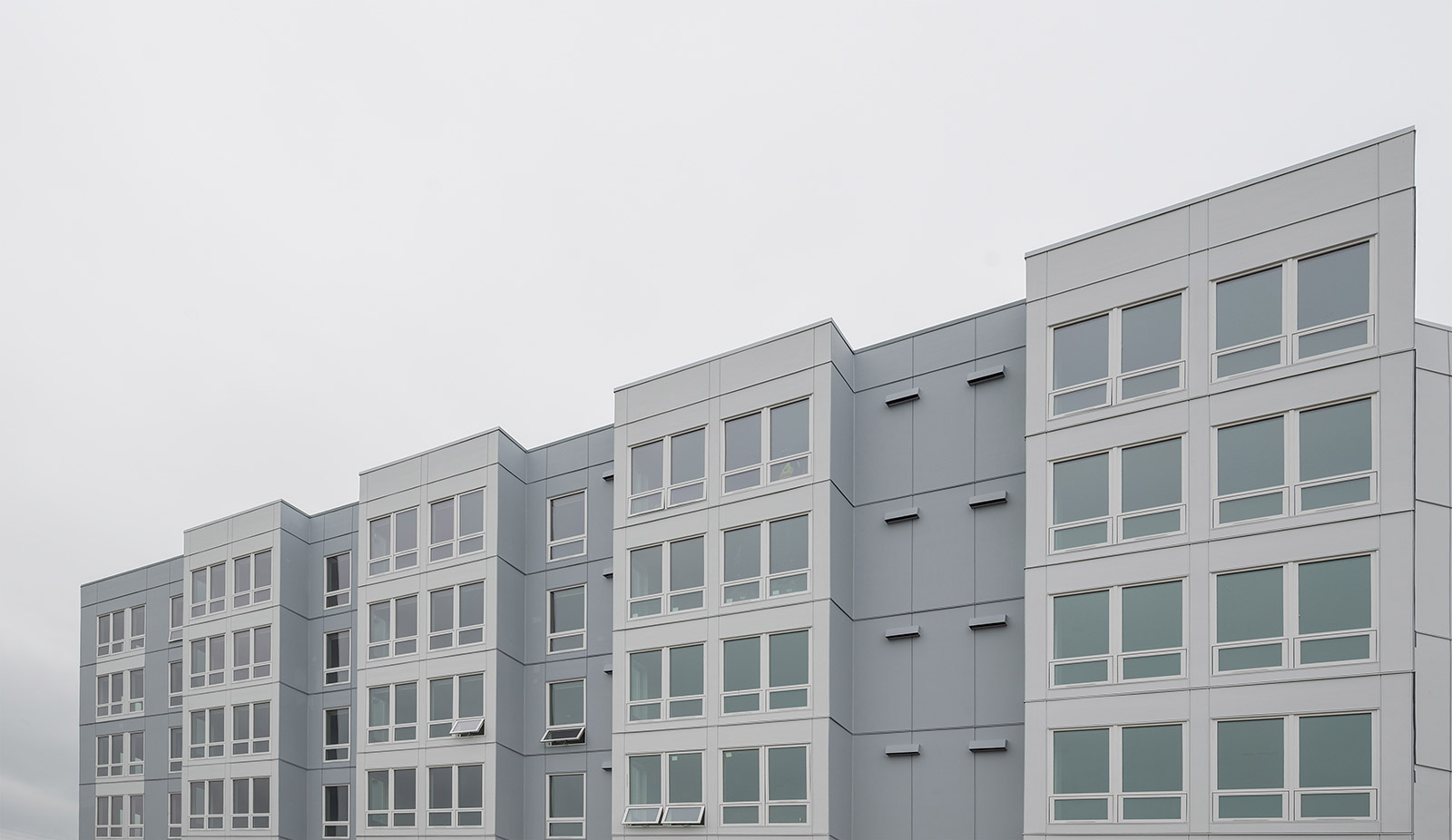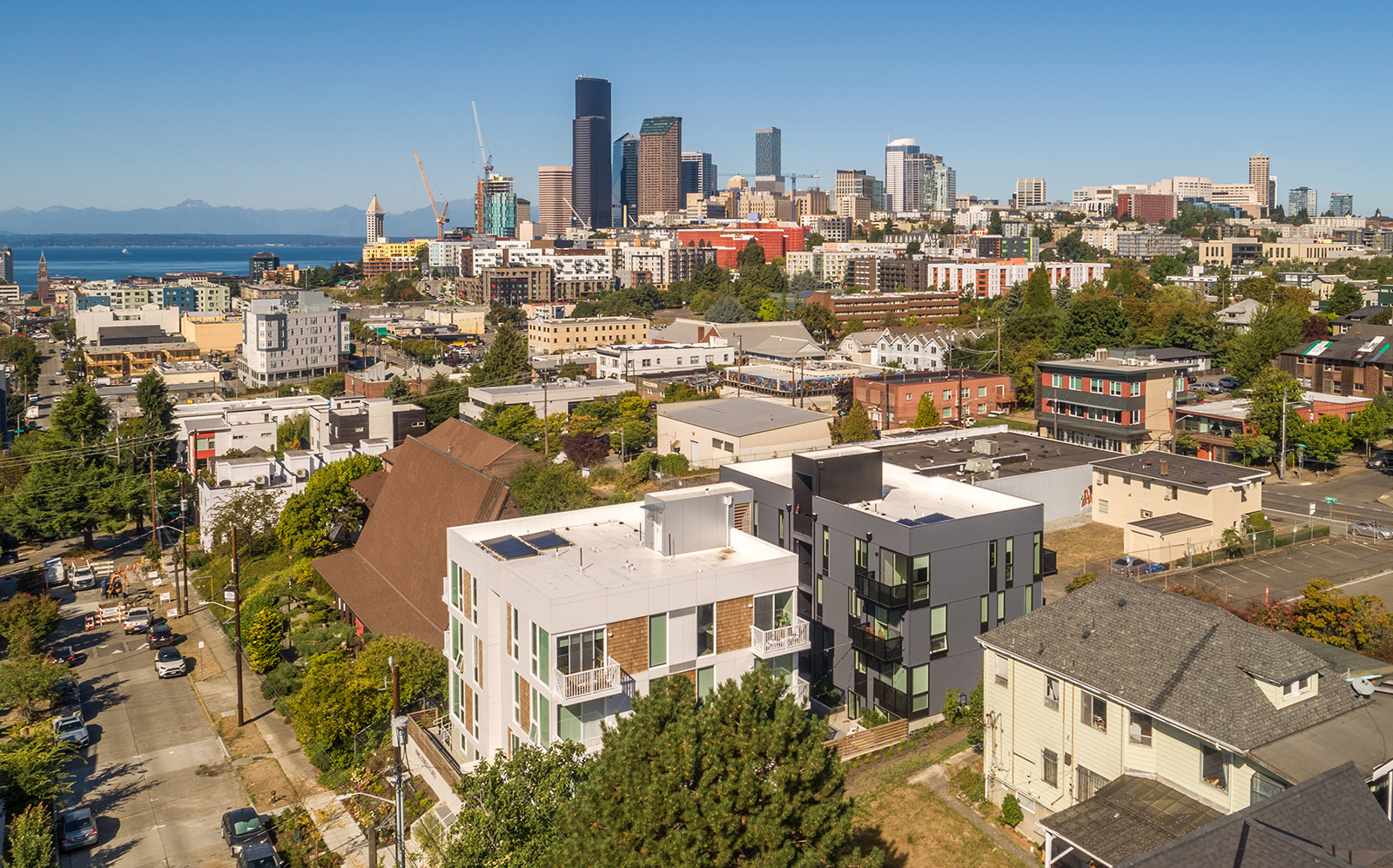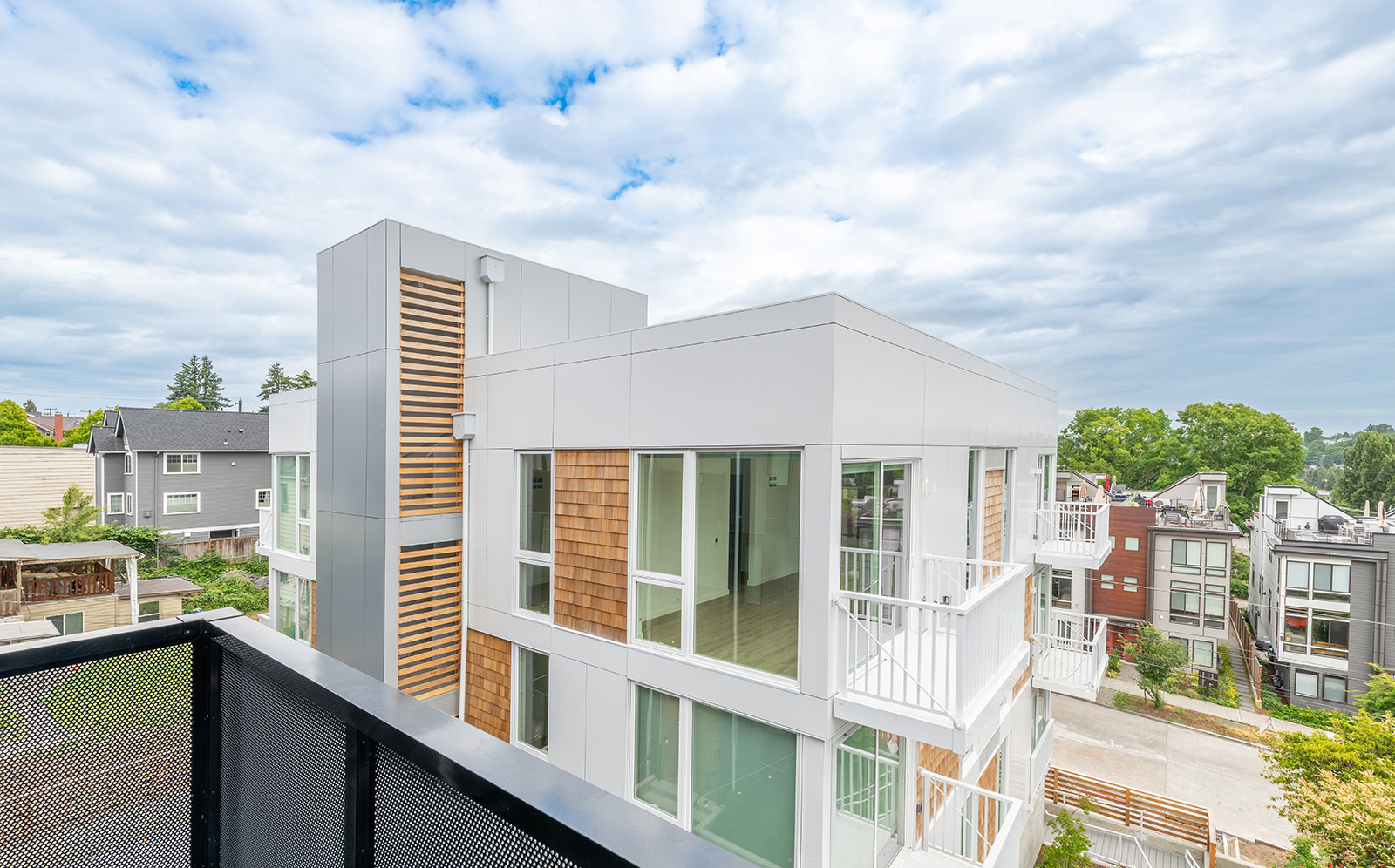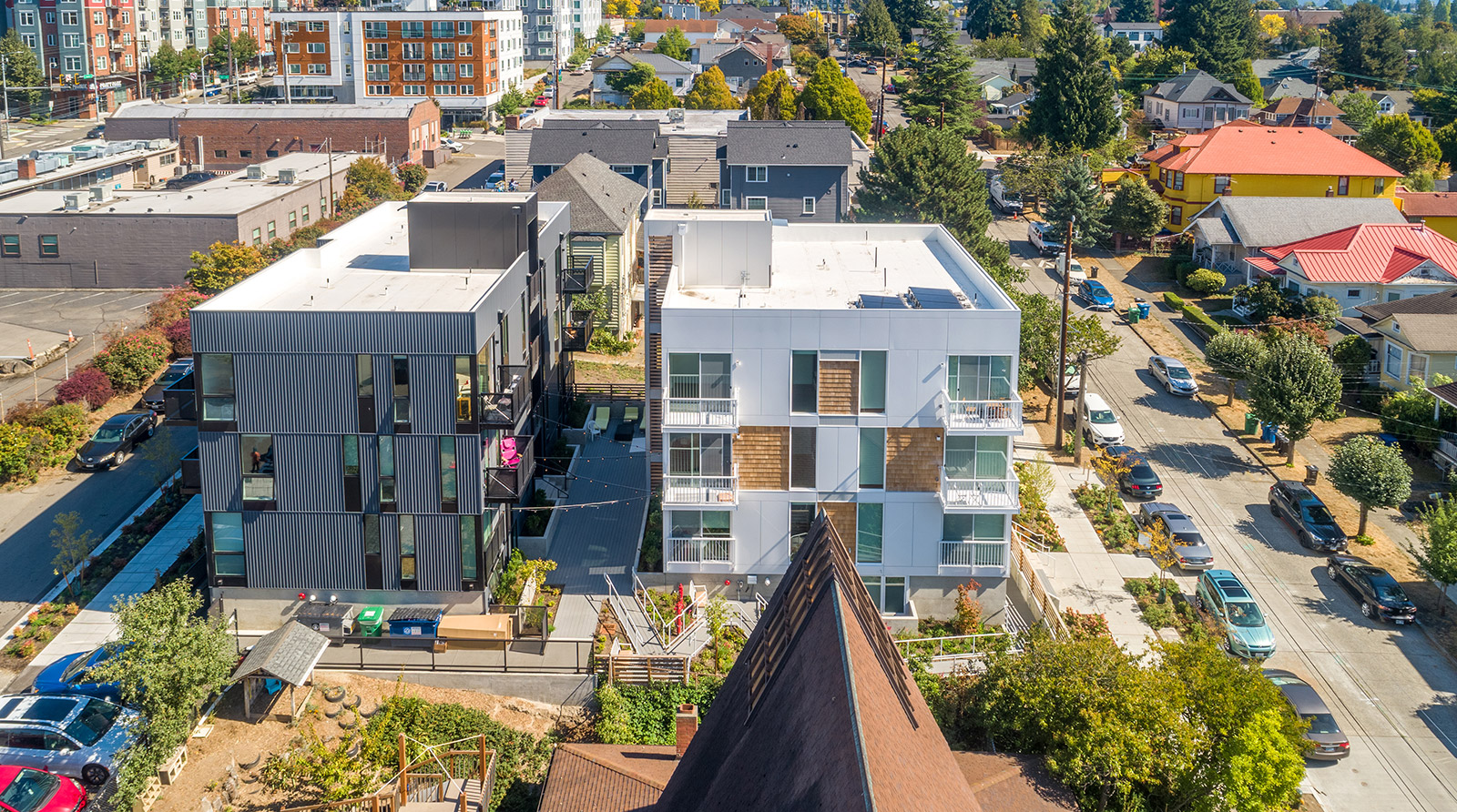Over the last decade, the economies of scale has had a dreadful effect on the built environment, leaving permanent markings of a profound lack of context, proximity, and thoughtfulness in our cities. The results have confirmed what most of the design conscious knew all along: mega developments created by out-of-town firms rarely benefit the city or most of the people living in it.
Nowhere is this more pronounced than in Seattle where the pendulum has finally swung too far. These super-sized apartment buildings, that often max out the buildable envelope of full city blocks, lack any relationship to the environment or community. And how could they? The design of such projects is often guided by spreadsheets instead of a thoughtful architectural process—and by out-of-town multi-family specialists who lack context rather than local developers and architects who understand the people and the place. Typically identified by the chain coffee house, copy shop, or burger joint on the ground level, these projects fail to create a sense of place, they tend to be transitory for tenants, and are disregarded by the community. Connect several of these monotonous city blocks together and you get what The New York Times aptly described as an anytown sameness in their recent article “America the Bland”. Worse, some cities enforce zoning codes that require architects to modulate the facades of large budlings — through tricks and fakery— so they appear as a collection of smaller buildings.
The critique has, at last, come to the forefront of the American media, and while we could continue with a long list of concerns, the answer is clear to those interested in healthy and vibrant built environments: small buildings make for healthier, more vibrant cities and towns.
BUILD’s recently completed King Street Flats project in Seattle’s Central Area offers a good case study to spell out some of the attributes of small buildings. Built on two small LR2-zoned lots with a combined area of just 9,600-sf, the project straddles two very different environments. To the south is a residential area with a mix of single-family residences, townhomes, and apartment buildings with views to Beacon Hill and Mount Rainier. To the north is a more industrial neighborhood populated by industrial warehouses, shops, office spaces, and a variety of other commercial uses. Views to downtown Seattle, the Puget Sound, and the Olympic Mountains sit to the west.
An exhaustive, multi-year study of the environment and community demonstrated a complicated but rich context. Because the design team and the mom-and-pop developer live and work locally, this context was experienced, studied, and thoroughly understood prior to beginning design. In general, local design teams care about these communities because they live in them; they have a direct commitment to making the project fire on all cylinders and being successful on all fronts.
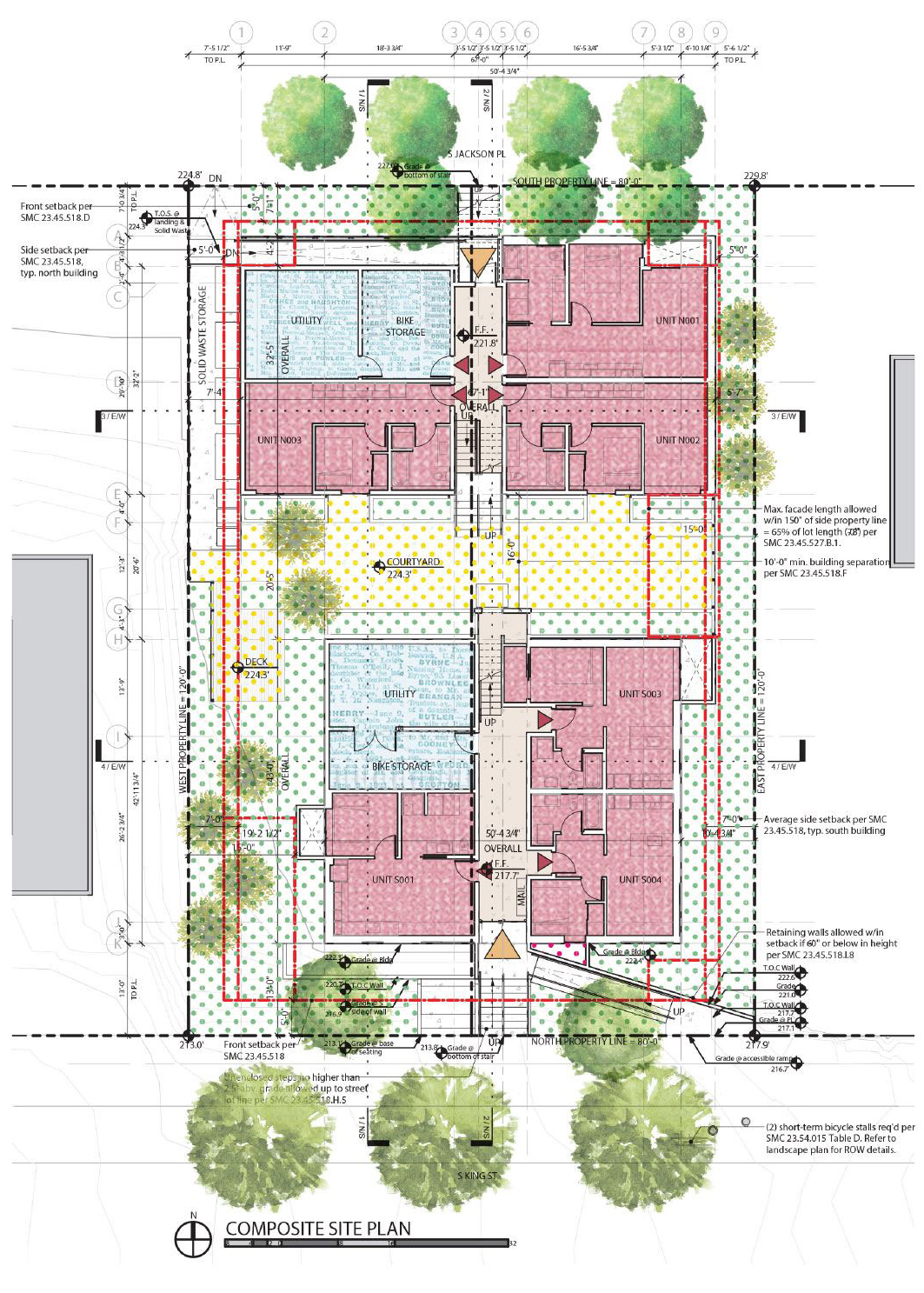 In order to maintain the granularity of the neighborhood and to creatively navigate the slope, the project was split into two separate buildings. This opened up the possibility for shared community space in between, and allowed each building to better relate to its own context. The south building uses light stained cedar shingles to add texture and echo the residential neighborhood to the south. Ramps and elongated stairs turn the building entry into a front porch facing the neighborhood, while careful landscaping softens the sidewalk edge and connects the greenbelt on each side. The north building acknowledges its industrial context with darker colors and a corrugated siding package. Improvements to the street include a new sidewalk, street trees, and a greenbelt in anticipation of future developments along Jackson Place.
In order to maintain the granularity of the neighborhood and to creatively navigate the slope, the project was split into two separate buildings. This opened up the possibility for shared community space in between, and allowed each building to better relate to its own context. The south building uses light stained cedar shingles to add texture and echo the residential neighborhood to the south. Ramps and elongated stairs turn the building entry into a front porch facing the neighborhood, while careful landscaping softens the sidewalk edge and connects the greenbelt on each side. The north building acknowledges its industrial context with darker colors and a corrugated siding package. Improvements to the street include a new sidewalk, street trees, and a greenbelt in anticipation of future developments along Jackson Place.
The massing of the two smaller buildings leads to smaller shadows around the site, creates more articulation at the structure, and establishes buildings that have their own character—things that make architecture more interesting and enjoyable. Perhaps the greatest benefit of the smaller building theme is found inside where every dwelling is a corner unit. By orienting each floor plan as a quadrant, and keeping the corridors to the center, all units benefit from natural light and ventilation from two sides; most units also enjoy views to city, water, and mountains.
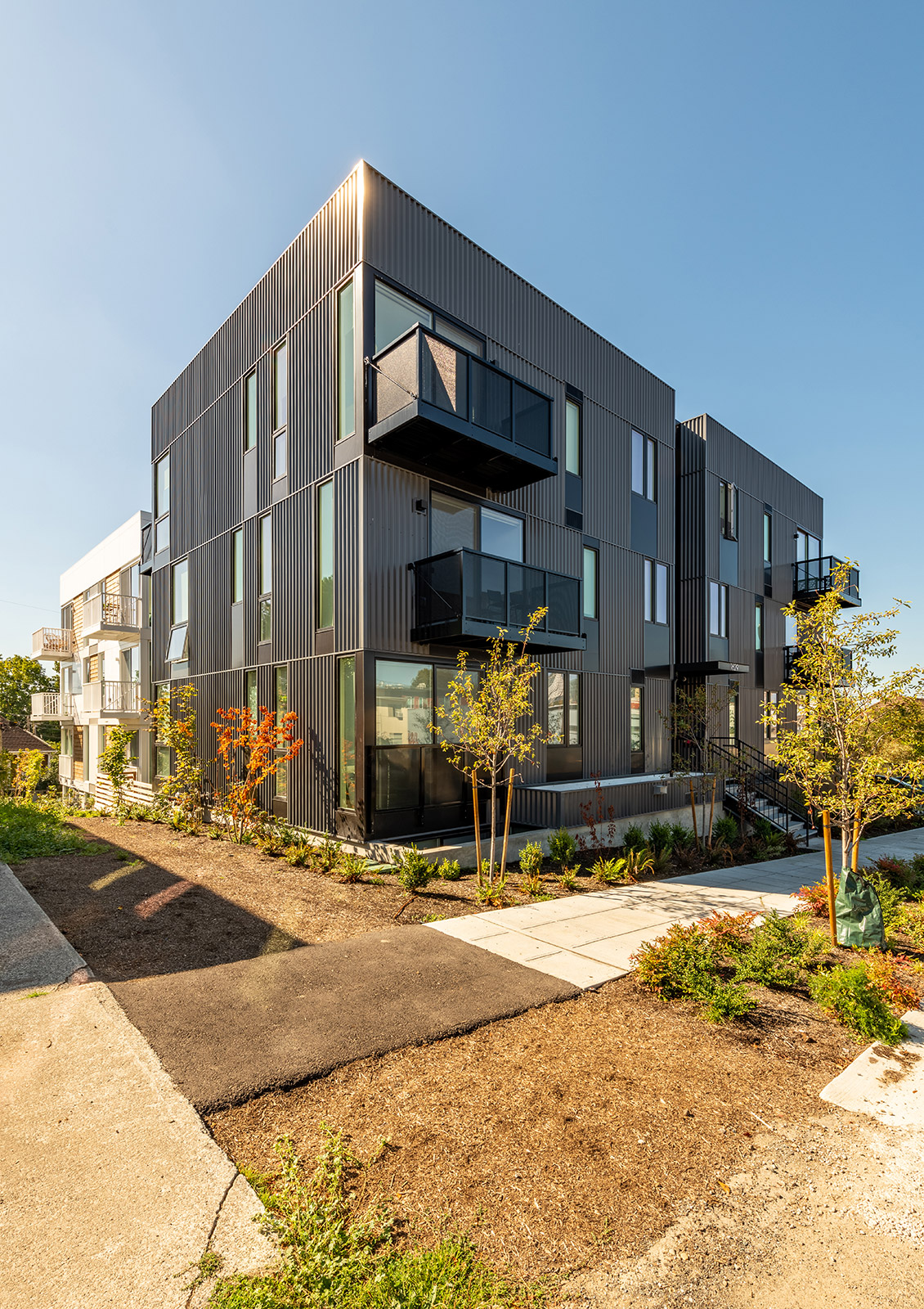 The buildings replaced a dilapidated single-family home, which led to a density increase of 2,900% in a city that desperately needs housing at a code red, DEFCON 1, crisis level. Although the new massing increased from that of a single-family residence, breaking it in two and keeping the scale tidy allowed the project to add density while neatly tucking into the exiting neighborhood. More, whereas larger projects displace existing cafes, restaurants, bars and shops, smaller projects not only retain them, but provide them with support and increased patronage.
The buildings replaced a dilapidated single-family home, which led to a density increase of 2,900% in a city that desperately needs housing at a code red, DEFCON 1, crisis level. Although the new massing increased from that of a single-family residence, breaking it in two and keeping the scale tidy allowed the project to add density while neatly tucking into the exiting neighborhood. More, whereas larger projects displace existing cafes, restaurants, bars and shops, smaller projects not only retain them, but provide them with support and increased patronage.
Small buildings, simply by virtue of their scale, have the ability to add density to the city without displacing the character of communities. Add in good design by local, well-informed developers and architects and these projects become inspiring living spaces that people and families want to stay in longer.
Cheers from Team BUILD






